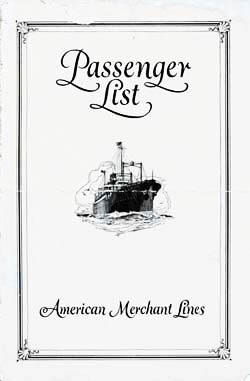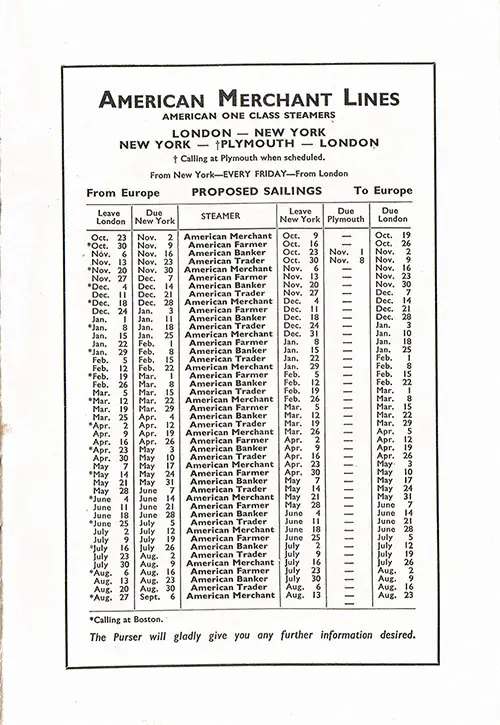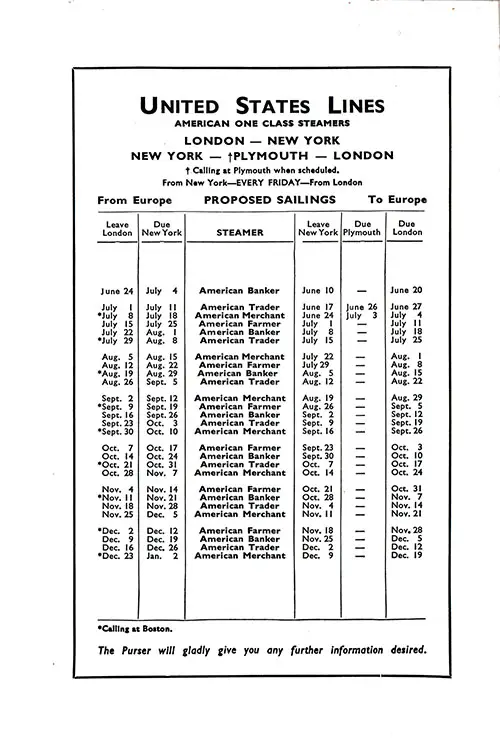SS American Merchant Archival Collection
American Merchant (1920) American Merchant Lines.
Built by American International Shipbuilding Corp., Hog Island, Penn. Tonnage: 7,430. Dimensions: 436' x 58'. Propulsion: Single-screw, 15 knots. Masts and Funnels: Two masts and one funnel. Previously Named: Aisne. Renamed: Ville de Namur. Fate: Torpedoed and sunk in June 1940. Sister Ships: American Banker, American Farmer, American Importer, American Shipper, American Trader and American Traveler.

SS American Merchant Passenger Lists 1928
All Digitized Lists of Passengers for the SS American Merchant Available at the GG Archives. Listing Includes Date Voyage Began, Steamship Line, Vessel, Passenger Class and Route.
Route: New York to London

American Merchant Lines to Europe - 1932
These are some of the attractions of an American Merchant Lines crossing. . . every day of it memorably pleasant from the minute you go on board in New York until you sail up the famous Thames right into the City of London.

Sailing Schedule, London-New York and New York-Plymouth-London, from 9 October 1936 to 27 August 1937. Ships Included the American Banker, American Farmer, American Merchant, and American Trader. SS Manhattan Passenger List, 21 October 1921. | GGA Image ID # 1ea7ddd84f

Sailing Schedule, London-New York and New York-Plymouth-London, from 10 June 1938 to 2 January 1929. Ships Included the American Banker, American Farmer, American Merchant, and American Trader. SS Manhattan Passenger List, 29 June 1938. | GGA Image ID # 1eaa38ac54
